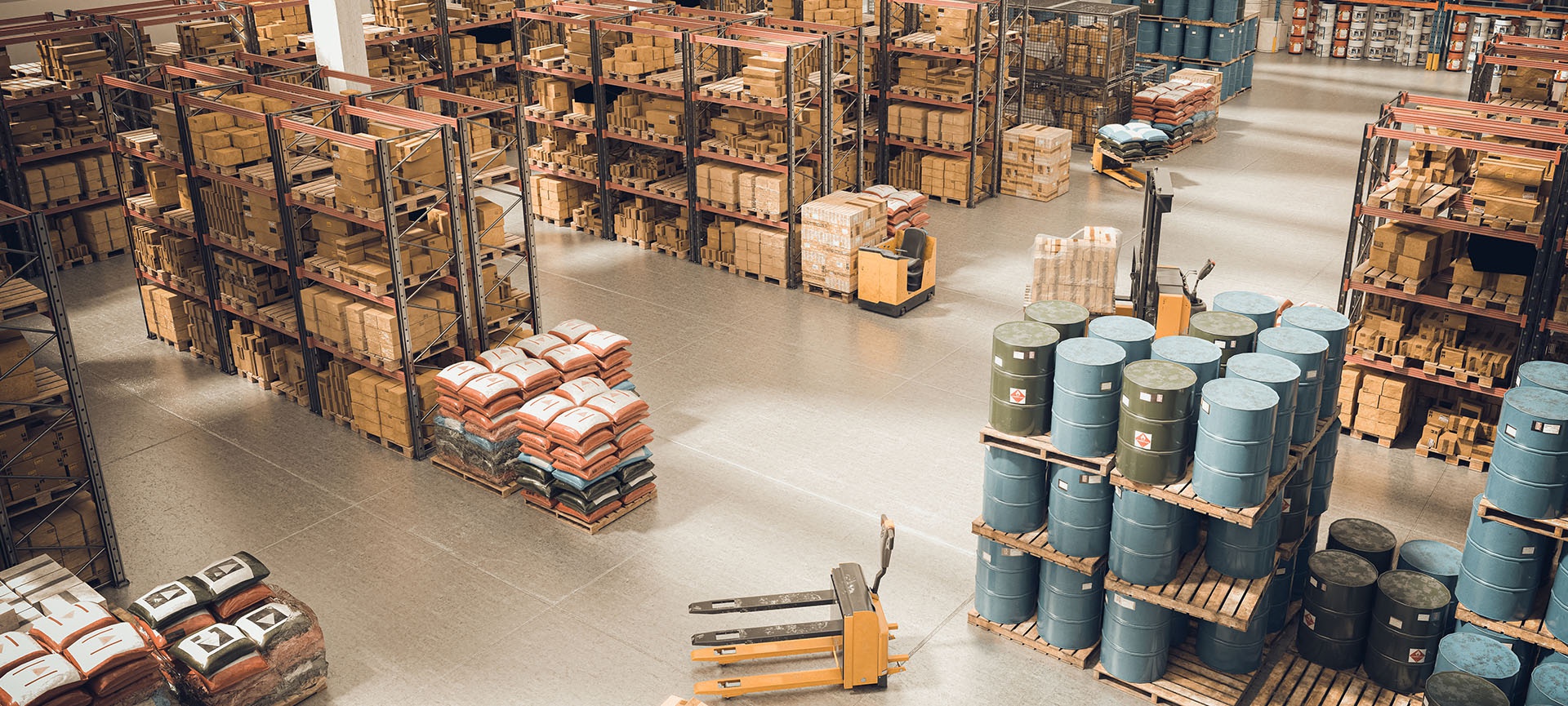In today’s fast-paced logistics and manufacturing sectors, businesses face constant challenges in managing their storage and distribution needs efficiently. Traditional warehouse ownership comes with high upfront costs, inflexible layouts, and long-term commitments, making it less ideal for companies seeking adaptability. This is where Industrial leasing steps in, offering a practical, flexible, and cost-effective alternative. With industrial leasing, businesses can access the space they need, when they need it, without tying up capital in property ownership.
In this article, we’ll explore everything you need to know about industrial leasing, from its benefits and types to key considerations and best practices. Whether you’re a startup looking for scalable warehousing or an established enterprise seeking strategic logistics solutions, this guide from WareMatch has you covered.
What is Industrial Leasing?
Industrial leasing refers to the rental of industrial spaces, including warehouses, factories, manufacturing plants, and distribution centers. Unlike residential or commercial leasing, industrial leases are tailored to meet the unique demands of storage, production, and logistics operations.

Key Features of Industrial Leasing
- Flexible Lease Terms: Unlike buying property, leasing allows businesses to adjust the space according to operational needs.
- Lower Upfront Costs: Leasing eliminates the significant capital expenditure associated with purchasing industrial property.
- Maintenance and Upgrades: Many leases include provisions for property maintenance and facility upgrades, reducing operational burdens on tenants.
- Scalability: Industrial leasing supports business growth, enabling companies to expand or downsize space as required.
Benefits of Industrial Leasing
Businesses across industries are increasingly turning to industrial leasing for several compelling reasons. Here are some of the most significant benefits:
Cost Efficiency
Leasing industrial space allows businesses to allocate capital towards core operations rather than investing heavily in real estate. This can be especially advantageous for startups or companies testing new markets.
Flexibility and Scalability
As business needs fluctuate, industrial leasing offers the flexibility to scale up or down. A growing e-commerce company, for example, can lease additional warehouse space during peak seasons without committing to permanent property.
Strategic Locations
Industrial leasing often provides access to prime logistics hubs, ensuring efficient supply chain operations. This can reduce transportation costs and improve delivery times.
Reduced Operational Responsibilities
In many leasing agreements, landlords handle property maintenance, security, and infrastructure improvements. This allows businesses to focus on their operations instead of managing real estate issues.
Tax Benefits
In some regions, lease payments for industrial spaces are considered a business expense and can be deducted from taxable income, offering financial advantages over property ownership.
Types of Industrial Leasing
Understanding the different types of industrial leases can help businesses select the right solution for their operational needs.
1. Warehouse Leasing
Warehouse leasing is ideal for companies that require space for storage, inventory management, and distribution. Leases can range from a few thousand to hundreds of thousands of square feet, depending on operational requirements.
2. Manufacturing Facility Leasing
These leases cater to businesses involved in production and assembly. They often include specialized infrastructure such as high ceilings, heavy-duty flooring, ventilation, and loading docks.
3. Flex Space Leasing
Flex spaces are versatile facilities that combine office and industrial space. This type of lease is perfect for businesses that need administrative and operational activities under one roof.
4. Cold Storage Leasing
For companies in the food, pharmaceutical, or biotechnology sectors, cold storage leasing ensures temperature-controlled environments for perishable goods.
Factors to Consider When Choosing an Industrial Lease
Selecting the right industrial space requires careful evaluation of several critical factors.
Location and Accessibility
Proximity to suppliers, customers, and transportation hubs can directly impact operational efficiency. Choosing a location with good road, rail, or port access is crucial.
Lease Terms and Conditions
Understand the length of the lease, renewal options, and any restrictions on property modifications. Clear terms prevent unexpected expenses or operational disruptions.
Size and Layout
Ensure the leased space can accommodate current operations and future growth. Consider the ceiling height, dock availability, and storage capacity.
Infrastructure and Amenities
Check for essential amenities such as loading bays, power supply, ventilation, and security systems. The right infrastructure supports smooth operational workflows.
Cost Considerations
While rent is a primary factor, consider additional costs such as utilities, insurance, property taxes, and maintenance fees. Factor these into the total cost of occupancy.
Industrial Leasing Trends in 2025
The industrial leasing landscape is constantly evolving. Here are some current trends shaping the market:
Rise of E-Commerce Warehousing
With the growth of e-commerce, demand for flexible warehouse space has surged. Industrial leasing allows companies to respond to seasonal spikes and sudden increases in inventory demand.
Technology-Enabled Warehouses
Smart warehouses equipped with automation, robotics, and IoT solutions are becoming increasingly common. Industrial leases now often accommodate such technological upgrades.
Sustainability and Green Leases
Environmental considerations are influencing lease agreements. Green leases incentivize energy efficiency, waste reduction, and sustainable facility management.
Short-Term and Flexible Leases
Businesses are favoring short-term leases to reduce long-term commitments and allow agility in uncertain markets.
How to Maximize Value from Industrial Leasing
To make the most of industrial leasing, companies should implement strategic practices:
Conduct a Needs Assessment
Understand your current and future space requirements. Evaluate operational processes, storage needs, and anticipated growth before signing a lease.
Negotiate Lease Terms
Don’t accept standard terms without negotiation. Discuss rent adjustments, renewal options, and exit clauses to align with your business objectives.
Leverage Technology
Use warehouse management systems (WMS), inventory tracking, and automation tools to optimize leased space efficiently.
Monitor Market Rates
Stay informed about industrial leasing rates in your area to ensure competitive pricing and avoid overpaying.
Partner with a Trusted Leasing Platform
Platforms like WareMatch help businesses find suitable industrial leasing options quickly and efficiently, providing access to verified listings and professional guidance.
Challenges in Industrial Leasing
While industrial leasing offers many advantages, it’s not without challenges. Awareness of these can help businesses mitigate risks.
Lease Restrictions
Some leases limit property modifications, subleasing, or operational hours. Understanding restrictions is essential to prevent conflicts with business needs.
Market Volatility
Industrial leasing rates can fluctuate based on demand, economic conditions, and location, affecting long-term budgeting.
Maintenance Dependencies
While landlords often handle maintenance, delays or lack of responsiveness can impact operations. Clear contractual terms can address this risk.
Competition for Prime Locations
High-demand areas may have limited availability, requiring early planning and proactive leasing strategies.
Case Studies: Successful Industrial Leasing
Case Study 1: E-Commerce Startup
A fast-growing online retailer leveraged industrial leasing to secure scalable warehouse space in a strategic logistics hub. The flexibility allowed rapid expansion during peak seasons without upfront capital investment in property.
Case Study 2: Manufacturing Expansion
A mid-sized manufacturer leased a state-of-the-art production facility through WareMatch. The lease included maintenance and upgrade options, reducing operational overhead while supporting growth.
Case Study 3: Cold Storage Solution
A pharmaceutical company used industrial leasing to access temperature-controlled warehousing across multiple locations, ensuring product integrity without heavy capital expenditure.
Why Choose WareMatch for Industrial Leasing
WareMatch is a trusted platform connecting businesses with flexible industrial leasing options. Our services include:
- Verified industrial property listings
- Transparent lease terms
- Professional guidance and support
- Access to diverse warehouse, manufacturing, and storage solutions
With WareMatch, finding the right industrial lease is faster, simpler, and more reliable.
FAQs About Industrial Leasing
1. What is the difference between industrial leasing and commercial leasing?
Answer: Industrial leasing focuses on spaces designed for manufacturing, warehousing, and logistics, while commercial leasing typically refers to office or retail spaces.
2. Can industrial leases be short-term?
Answer: Yes, many industrial leases offer flexible terms, including short-term agreements, allowing businesses to scale their operations as needed.
3. Are lease payments tax-deductible?
Answer: In many jurisdictions, lease payments for industrial properties are considered a business expense and can be deducted from taxable income.
Conclusion
Industrial leasing offers businesses the flexibility, scalability, and cost-efficiency needed to thrive in a competitive market. From startups to large enterprises, leasing industrial space allows companies to focus on operations, expand strategically, and respond to market demands without heavy capital investment. By partnering with platforms like WareMatch, businesses can find tailored solutions that meet their warehousing, manufacturing, and storage needs. Our website is your ultimate source of valuable information.
